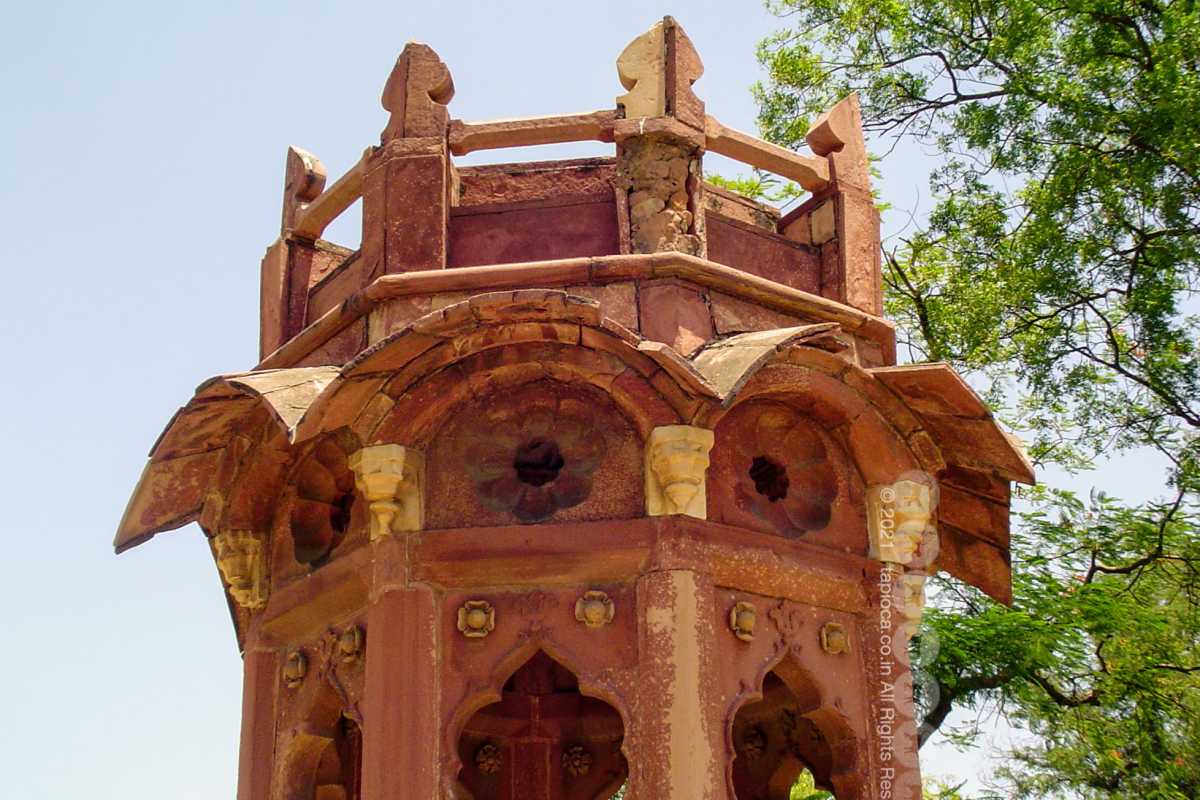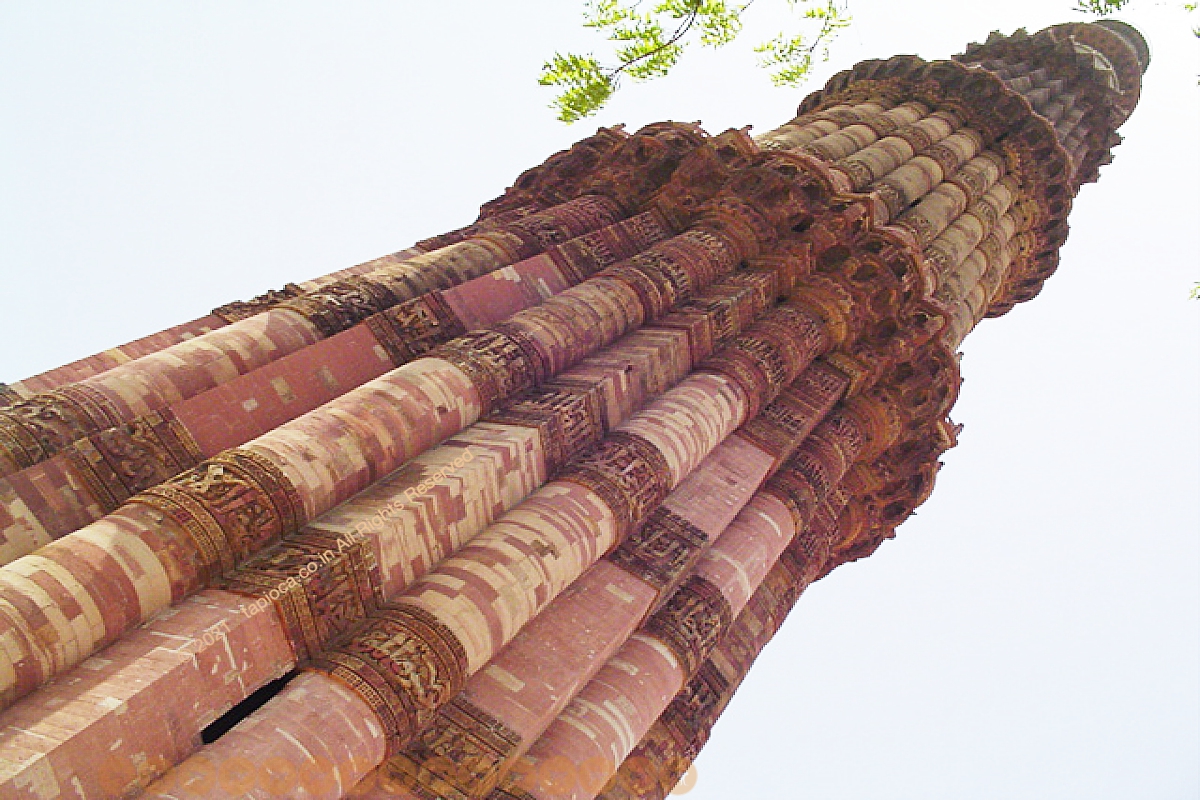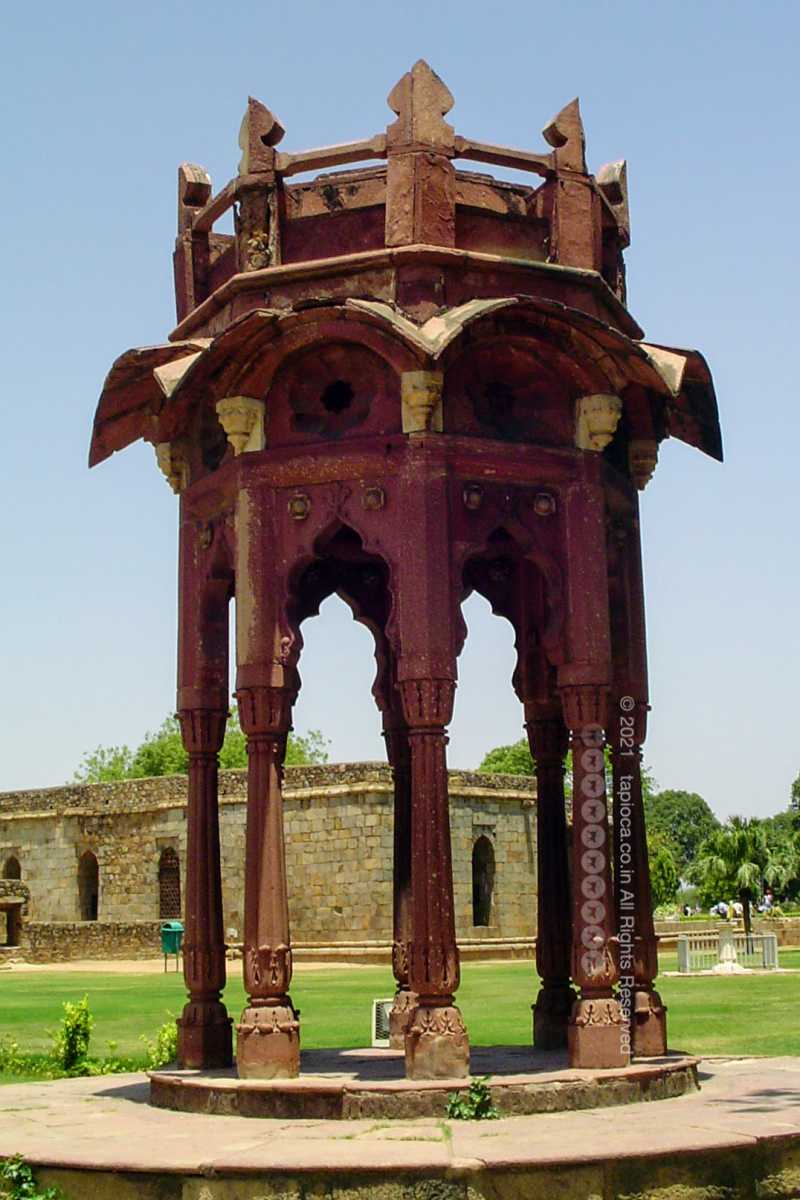Smith's Folly
Sometimes the conservation efforts overshoots the intention. 'Smith's Folly' at Qutab is a classic example.

The Hindu Chatthri style used by Major Robert Smith
This once stood at the top of Qutub as a retrofit
M
ore than ones Qutub Minar faced structural damages due to lightning strikes and earthquakes.The last major damage happened in 1193 AD about 175 years after its inauguration. Feroz Shah Tughlaq , the sultan of Delhi at the time repaired it , adding two more stores to augment its height and capped it with a Cupola (a rounded dome).You can now see at Qutab Minar the two extended stories, but not the Cupola.
Six centuries after the installation by Feroz Shah Tughlaq the cupola fallen of from the Qutab in 1803 in an earthquake. Much has changed in Delhi's politics. The then British Governor General of India authorized Major Robert Smith of the Royal Engineers to do the repairs. Robert Smith was already known for his skills in the local architectural styles. He's the same engineer build the St James Church in the Old Delhi
To the utter architectural distaste, he capped the tower with a Hindu architecture style chatthri. He missed both, the historic context of the Qutab Minar and well as the architectural style used in its execution. A monument erected some 600 years back to commemorate the victory of the sultanate over the Hindu kingdom, is capped with a Hindu style architecture!
In 1848 AD, Lord Hardinge , the then Governor General of colonial India ordered to pull this down.
By the time Smith's improvisation earned the nickname - the Smith's Folly!
Unlike the lost dome of Feroz Shah Tughlaq, the Smith's Folly is re assembled and kept as a tailpiece of history. You can see this in the garden on the southeast corner of the Qutab Minar complex.
The follies around Qutub doesn't end with the Smith's Folly. Metcalfe’s Folly a pavilion built by Charles Metcalfe, an Indophile British stands on the grassy slopes of the Mehrauli Archaeological Park, a bit south of the Qutab Complex.

Delhi
Qutab Minar is the the tallest stone built minaret in India

Smith's Folly at Qutab Minar Complex in Delhi
Unlike the lost dome of Feroz Shah Tughlaq, the Smith's Folly is re assembled and kept as a tailpiece of history. You can see this in the garden on the southeast corner of the Qutab Minar complex.
